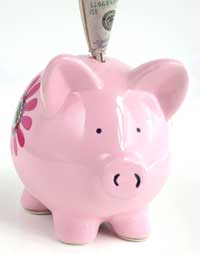Marketing Guides
Campaigns & Execution
How to Calculate Cost of Goods
 Marketing campaigns are investments. And like any smart investment, they need to be measured, monitored and compared to other investments to ensure you’re spending your money wisely.
Marketing campaigns are investments. And like any smart investment, they need to be measured, monitored and compared to other investments to ensure you’re spending your money wisely.
Return on investment (ROI) is a measure of the profit earned from each investment. Like the return you earn on your portfolio or bank account, it’s calculated as a percentage.
In simple terms, here’s the ROI formula:
ROI = (Profit – Investment)
Investment
Profit = Revenue – Cost of goods sold (COGS)
[Note: You can download free ROI calculators from our app. They’ll also help you calculate your COGs.]
ROI calculations for marketing campaigns can be complex — you may have many variables on both the profit side and the investment (cost) side. But understanding the formula is essential if you need to produce the best possible results with your marketing investments.
In this post I’ll focus on how to calculate cost of goods sold, which is the actual cost to physically produce your company’s product or service. Companies calculate COGS differently, so check with your finance or accounting team to get the formula they use. But if you’re on your own, here’s a way to calculate COGS for a product and then for a service.
Calculate Cost of Goods for a Product
Choose a timeframe for your calculation – you’ll record or estimate your expenses over this period (month, quarter, year, etc.).
| Data | Value | # |
| How much did you spend on raw materials during this timeframe? | A | |
| What did you spend on labor to produce the product? | B | |
| List the costs associated with the shipping & inventory of raw materials | C | |
| Production facility expenses if the facility is solely for this product (or you can use a percentage) | D | |
| Some companies include an allocation for general overhead, such as customer service, order processing, or other items in the COGS figure. Enter the total for the timeframe. | E | |
| TOTAL: Add A through E | F | |
| Number of units sold during this period | G | |
| Divide F by G – this is your COGS per unit | H |
Calculate Cost of Goods for a Service
If you need cost of goods sold for a service, choose a time frame for your calculation – you’ll report or record your expenses over this period (month, quarter, year, etc.).
| Data | Value | # |
| How much did you spend on labor to deliver the service over your chosen timeframe? | A | |
| What did you spend on materials to deliver your service? | B | |
| Are there any other variable costs associated with the delivery of your service? | C | |
| Some companies include an allocation for general overhead, such as customer service, order processing, or other items in the COGS figure. Enter the total for the timeframe. | D | |
| TOTAL: Add A through D | E | |
| Number of services delivered (or customers serviced) during this period | F | |
| Divide E by F – this is your COGS per unit | G |
Again, it’s important to check with your accountant/finance expert to make sure you’ve calculated correctly for your company or industry — particularly if you’re going to use the data for investment decisions.
Now that you have a cost of goods figure, keep it handy — you’ll need it in your ROI and Customer Lifetime Value (CLV) metrics.
COST OF GOODS CALCULATORS / MARKETING PLANS / PROJECT MANAGEMENT
EVERYTHING YOU NEED FOR YOUR MARKETING PROJECT